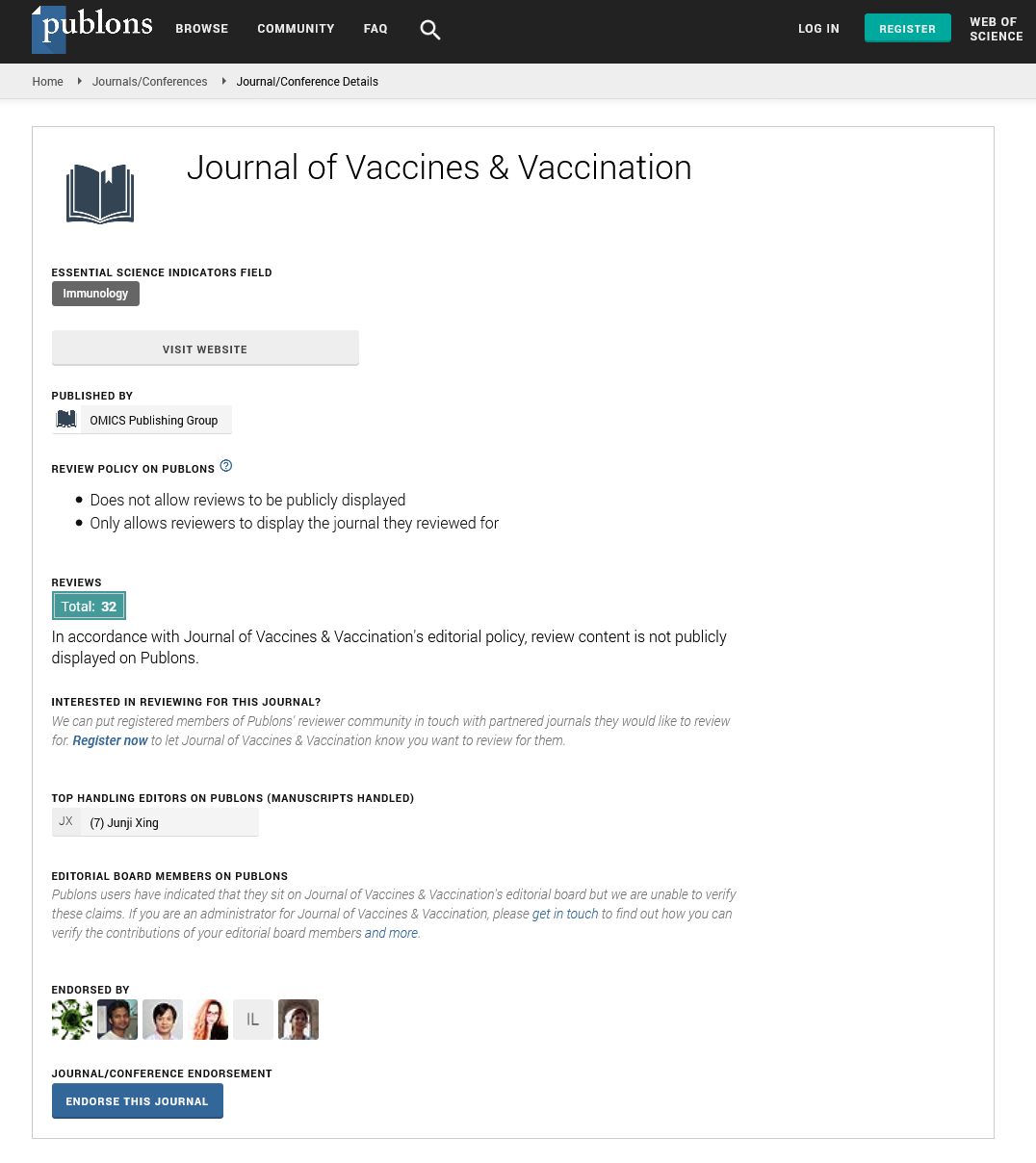PMC/PubMed Indexed Articles
Indexed In
- Academic Journals Database
- Open J Gate
- Genamics JournalSeek
- JournalTOCs
- China National Knowledge Infrastructure (CNKI)
- Scimago
- Ulrich's Periodicals Directory
- RefSeek
- Hamdard University
- EBSCO A-Z
- OCLC- WorldCat
- Publons
- MIAR
- University Grants Commission
- Geneva Foundation for Medical Education and Research
- Euro Pub
- Google Scholar
Useful Links
Share This Page
Open Access Journals
- Agri and Aquaculture
- Biochemistry
- Bioinformatics & Systems Biology
- Business & Management
- Chemistry
- Clinical Sciences
- Engineering
- Food & Nutrition
- General Science
- Genetics & Molecular Biology
- Immunology & Microbiology
- Medical Sciences
- Neuroscience & Psychology
- Nursing & Health Care
- Pharmaceutical Sciences
Serotype distribution of Streptococcus pneumoniae in invasive disease and nasopharyngeal carriages pre-vaccine introduction in Cuba
29th International Conference on Vaccines and Immunization
March 19-20, 2018 | London, UK
Maria Eugenia Toledo-Romani, Gilda Torano, Laura M Rodriguez Noda, Isabel Luis Gonzalvez and Nivaldo Linares-Perez
Tropical Medicine Institute ā??Pedro Kouriā?, Cuba
Finlay Vaccine Institute, Cuba
Posters & Accepted Abstracts: J Vaccines Vaccin
Abstract:
Background & Aim: Cuba has a new heptavalent PCV under advanced clinical development and its introduction in children 1-5 years old is scheduled in 2018. We report the results of serotyping and antibiotic susceptibility testing performed on isolates from invasive pneumococcal (IPD) and nasopharyngeal (NP) carriages in Cuban hospitalized children, pre-vaccine introduction. Methods: A total of 353 isolates from IPD and 80 from the nasopharynx of hospitalized children <5 year old with clinical pneumonia were recovered prospectively during 2013-2016. Typing of isolates was done using capsular swelling method with the Pneumo test reagent set. Antimicrobial susceptibility was determined following CLSI methods. Results: The higher proportion of isolation from IPD was collected in children among 12-59 year old (annual average 30.2; range 20.0-40.4); 85.8% of them belonged to the follow seven serotypes, in order of frequency: 14, 19A, 6A, 19F, 6B, 3 and 23F. Serotypes 6B, 6A, 19F y 23F were associated to antimicrobial resistance: penicillin (16.7%), ceftriaxone (3.15%), macrolides (62.7%), trimethoprim-sulfamethoxazole (40.3%) and chloramphenicol (7.4%). The proportion of NP colonization in hospitalized children was 13.76% and the serotype and resistance profile was similar to the pattern of IPD isolates, but 19A was the predominant (25%) and 100% of Ī²-lactamase susceptibility was demonstrated. Non vaccine serotypes represent 23.7% of all isolation from nasopharynx. Conclusions: Our data predict more than 50% coverage of the circulating S. pneumoniae in Cuba with the new heptavalent conjugate vaccine and could be useful for evaluating the serotype distribution in support of their introduction.

